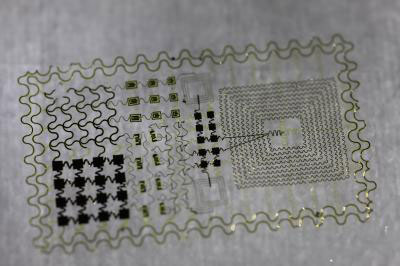Understanding Electronic Skin
Introduction: Electronic skin (e-skin) represents a breakthrough in wearable technology, mimicking the functionality and mechanical properties of human skin. This innovative material can detect changes in its environment, such as pressure, temperature, and humidity, making it a pivotal technology in robotics, prosthetics, and wearable devices.

What is Electronic Skin?
Electronic skin refers to flexible, stretchable electronics that mimic the sensing capabilities of human skin. It comprises an array of sensors embedded in a substrate that can detect various stimuli, including pressure, temperature, strain, and moisture. The development of e-skin is inspired by the human skin's remarkable ability to sense and respond to environmental changes, aiming to replicate these features in artificial systems.
Materials Used in Electronic Skin
The construction of electronic skin utilizes advanced materials such as conductive polymers, silicones, and nanomaterials. These materials offer flexibility, stretchability, and sensitivity, which are crucial for mimicking the tactile feedback of human skin. Conductive polymers, for instance, enable the e-skin to detect electrical changes, while nanomaterials enhance its sensitivity and durability.
How Does Electronic Skin Work?
Electronic skin operates through the integration of sensors and circuits on a flexible substrate, converting external stimuli into electrical signals. Advances in materials science have enabled e-skin to be sensitive, self-healing, and stretchable, improving its functionality and longevity.
Applications of Electronic Skin
Electronic skin's applications are wide-ranging:
- Healthcare and Medical Devices: E-skin is revolutionizing prosthetics, providing sensory feedback akin to natural skin in devices like prosthetic hands. It also enables the development of health monitoring patches that track vital signs and early disease detection.
- Robotics: In robotics, e-skin allows robots to sense and interact with their surroundings more safely and accurately.
- Wearable Technology: E-skin paves the way for smart clothing that monitors health or environmental conditions, integrating technology into everyday life seamlessly.
Example of Electronic Skin in Real-World Products
A notable example of electronic skin in action is its application in advanced prosthetic limbs. These prosthetics use e-skin to provide users with tactile sensations and grip strength control, significantly enhancing the functionality and user experience. For instance, a prosthetic hand equipped with e-skin can detect the pressure needed to grasp different objects, allowing users to perform tasks with greater precision and sensitivity.
Challenges and Future Directions
While promising, the development of electronic skin faces challenges like enhancing sensor accuracy and durability. Future research focuses on creating more functional, practical, and environmentally friendly e-skin.
The ongoing advancement in material science and engineering continues to elevate electronic skin technology. With these innovations, e-skin is set to transform healthcare, consumer electronics, and more, showcasing a future where technology integrates more seamlessly into human capabilities.
Further Reading
Journal of Materials Chemistry B, A review of electronic skin: soft electronics and sensors for human health
Frontiers in Bioengineering and Biotechnology, Recent advances in electronic skins: material progress and applications
Nature Machine Intelligence, Artificial intelligence-powered electronic skin
